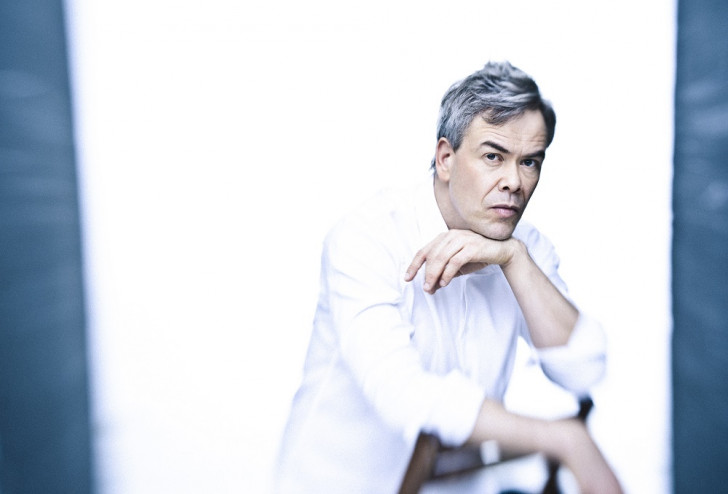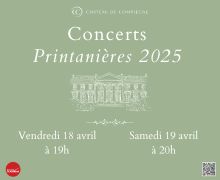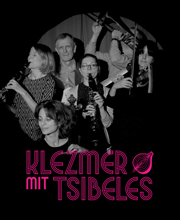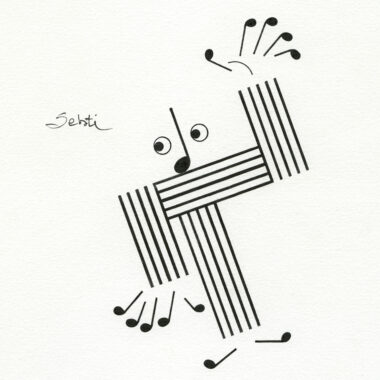Plus de détails
Helsinki. Helsinki Music Centre. 16-X-2019 and 25-X-2019. Magnus Lindberg (b. 1958): Related Rocks; Kinetics; Triumf att finnas till; Kraft; Aura; Igor Stravinsky (1882-1971): Les Noces. Joonas Ahonen, Emil Holmström, Jouko Laivuori; Magnus Lindberg: Piano; Tuomas Lehto: violoncello; Giuseppe Gentile: clarinet; Kazutaka Morita: timpani; Naoki Yasuda: percussion; Piia Komsi: soprano; Anna Danik: mezzo-soprano; Simo Mäkinen: tenor; Aarne Pelkonen: baritone; Juhani Liimatainen: electronics. Finnish Radio Symphony Orchestra, conductor: Hannu Lintu.
Any given Finnish Radio Symphony Orchestra performance of Lindberg's music is both idiomatic and definitive.

Throughout his long and distinguished career as a composer of orchestral music, the Finnish RSO, Lindberg's hometown band, has been a consistent and trusted partner. The FRSO religiously performs, promotes, and records Lindberg's music; this experience gained over decades of collaboration means that any given FRSO performance of Lindberg's music is both idiomatic and definitive.
The FRSO gave two concerts as part of a larger festival focusing on Lindberg's music. These two concerts were primarily focused on Lindberg's pre-2000 output, although a very recent work was also included. The first concert opened with Related Rocks, a 1997 composition for two pianos, percussion, and electronics. This was a particularly immersive performance that deftly differentiated between Lindberg's fingerprint rippling gestures with more dance-like fragments. Despite the very busy surface, Lintu ensured that the otherworldly beauty also found in this score was readily apparent.
Lindberg has stated that Stravinsky's Les Noces is a particularly important work to him as a composer. Scored for four pianos, percussion, chorus, and vocal soloists, there were certainly similarities in the sound worlds between this piece and Related Rocks. One can also hear the clangorous, machine-like, and at times unhinged aesthetic that permeates Les Noces in some of Lindberg's larger orchestral scores. Given all that came before, the final resonant bells that close Les Noces were effective and moving, and hinted at similar gestures that Lindberg would employ in the other works presented during the festival.
Lindberg composed Kinetics in 1989, four years after the premiere of the massive, ear-shattering Kraft. Although Lindberg was searching for different means of orchestral expression at this time, one can still hear the colossal textures and gestures in Kinetics, albeit this time married to a glistening and shimmering transparency. Still, the white-hot, delirious energy of the closing pages (marked with repeated blows from the Mahler 6 hammer) made it clear that Lindberg was still more than able to unleash the power of a large orchestra.
Composed in 2018, Triumf att finnas till was the most recent work of the festival and is scored for choir and orchestra. This work is representative of Lindberg's current aesthetic and is thus texturally and harmonically more accessible than the composer's other works featured on this program. Hearing the warm, almost consoling string textures of the opening was almost jarring in comparison to Kinetics, but one soon heard similar gestures as in the earlier work, only here employed with restraint and finesse. Triumf att finnas till was memorable for its expansive qualities, culminating in a satisfying and almost cathartic apotheosis.
The second program opened with the composer's gargantuan Kraft. Lindberg unleashes such deafening volume levels in this work that free earplugs were available to all audience members and there was a clear spoken warning of such volume levels at the beginning of the concert. While there were the obvious moments of fretting over one's hearing, careful listening revealed the logic behind Lindberg's seeming madness and a clear organization into groups of sounds. The quieter, more introspective moments (such as the stereophonic gongs throughout the concert hall) were particularly impressive. The composer himself played a very active role in the performance as both percussionist and solo pianist.
Aura dates from 1994 and was dedicated to the memory of Witold Lutosławski. This work is particularly notable for it's concerto-for-orchestra-like treatment of various orchestral groups, such as harp and piano, pitched mallet percussion, and solo cello and solo bassoon. While Aura is full of dense and busy textures it is also refined and polished, and concludes with some of the most transcendentally beautiful string writing from the composer.
Given Lindberg's vast output, one could of course complain that this or that work was not included in the festival; I personally would have liked to hear something from the early 2000s, such as Sculpture or Concerto for Orchestra. Nevertheless, Lintu, the FRSO, and the lengthy roster of soloists all brought their best games to the table, and it would be difficult to ask for a better tribute to one of Finland's musical treasures.
Credit photo : Hannu Lintu © Veikko Kähkönen
Plus de détails
Helsinki. Helsinki Music Centre. 16-X-2019 and 25-X-2019. Magnus Lindberg (b. 1958): Related Rocks; Kinetics; Triumf att finnas till; Kraft; Aura; Igor Stravinsky (1882-1971): Les Noces. Joonas Ahonen, Emil Holmström, Jouko Laivuori; Magnus Lindberg: Piano; Tuomas Lehto: violoncello; Giuseppe Gentile: clarinet; Kazutaka Morita: timpani; Naoki Yasuda: percussion; Piia Komsi: soprano; Anna Danik: mezzo-soprano; Simo Mäkinen: tenor; Aarne Pelkonen: baritone; Juhani Liimatainen: electronics. Finnish Radio Symphony Orchestra, conductor: Hannu Lintu.








